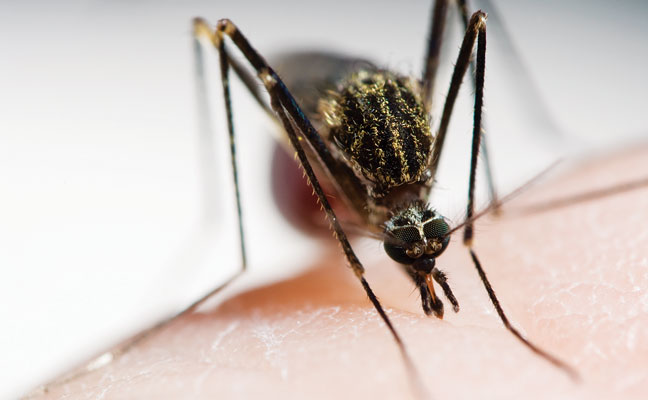The term invasive species is regularly used in the pest management industry. The U.S. Geological Survey defines invasive species as “an introduced, nonnative organism (disease, parasite, plant or animal) that begins to spread or expand its range from the site of its original introduction and that has the potential to cause harm to the environment, the economy, or to human health.”
The Asian bush mosquito (ABM) is an invasive pest whose scientific name is Aedes japonicus. Also known as the rock pool mosquito, it is native to Japan and Korea. It became established in the United States in the 1990s and has since spread to more than 31 states (see Fig. 1), Canada, and parts of Europe. Its rapid geographical expansion stems primarily from the international trade of used tires, which can harbor eggs of ABM as well as other invasive species such as the Asian tiger mosquito (A. albopictus). ABM can produce drought- and freeze-resistant eggs, which will then hatch under favorable conditions. It also can overwinter in the larval stage in some areas.

Fig. 1. This map depicts the introduced range of Aedes japonicus in the United States as of 2020, the most recent data available. Creator Dr. Catherine Lippi reports the spread has likely increased. State-level occurrences are shown in pink; documented county-level occurrences are shown in red. Map: UF/IFAS, Featured Creatures EENY-761, Dr. Catherine Lippi, June 2020.
Biology and behavior
Adult ABM are relatively large and exhibit a black-and-white pattern, thanks to white scales on the legs and other areas of the body. They could be confused with Asian tiger mosquitoes, but the main differentiating characteristic is a yellowish-gold appearance on the thorax of the ABM (Fig. 2), whereas the Asian tiger mosquito has a single white stripe (Fig. 3).
Biting adult ABM females have been collected from May through November in the Northeastern United States. This species is an aggressive biter primarily during the daytime and will readily bite humans outside — and occasionally inside homes. In fact, one of the most important questions pest management professionals (PMPs) should ask their customers is, “What time of the day are you being bitten?” Their answers can provide valuable clues as to which species you are dealing with, which will then drive your monitoring and control efforts.

Fig. 2. Note the yellow-gold markings on the body of ABM. Photo: doug4537 / E+ / Getty Images
Feeding habits and disease
Adult ABM of both sexes feed on plant juices and sugar, which they use as an energy source. Only female ABM feed on blood, which they use as a protein source to develop their eggs. ABM feeds primarily on mammalian hosts, but there is evidence of bird biting under laboratory conditions.
The three main hosts identified so far are humans, white-tailed deer (Odocoileus virginianus), and chipmunks (Tamias spp.). Remember that the more types of animals a mosquito feeds on, the more likely it is to pick up pathogens (viruses, bacteria, etc.) and then transmit them to humans.
In its native range, ABM is not considered a significant disease vector, although it can transmit Japanese encephalitis virus. In the U.S., there is concern that, once established, ABM will become involved in the transmission cycles of viruses such as West Nile (WNV) and others that are endemic. WNV has been detected in wild-caught ABM, and it has been shown in the laboratory that they can transmit many other viruses to humans.
Favored habitats

Fig. 3. In contrast to ABM, the Asian tiger mosquito has white markings on its body. Photo: Danut Vieru / iStock / Getty Images Plus / Getty Images
After taking a bloodmeal, ABM females rest for about four days while their eggs develop. They will then seek out water-holding natural and artificial containers, where they will place their eggs just above the water line, not directly on the water as many species do. Favored containers include tires, bird baths, clogged gutters, kiddie pools, tree holes, and tarps — basically, anything that will hold even a very small amount of water. Additionally, they will fly about the customer’s property, attempting to lay eggs in as many containers as possible. PMPs must inspect thoroughly for all potential breeding sites during inspections.
Many invasive mosquito species are moved around the country by human activity. This probably occurs most often when eggs, which in the case of ABM are highly resistant to drought and cold temperatures, hitchhike in things such as tires. We know these resistant eggs can survive for months or even years, only to hatch when flooded. This is a major reason why ABM is so difficult to control.
Control tips
How do we control ABM? Simply using a space or barrier spray is not enough. Rather, take an integrated mosquito management (IMM) approach. Emphasize source reduction through eliminating breeding sites.
Use larvicides selectively. Trap where you can, and conduct a thorough inspection every time, for they will likely change habitats between visits.
Reference
- Kaufman MG, Fonseca DM. 2014. “Invasion biology of Aedes japonicus japonicus (Diptera: Culicidae).” Annual Review of Entomology 59: 31-49.
Leave A Comment